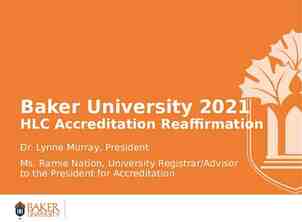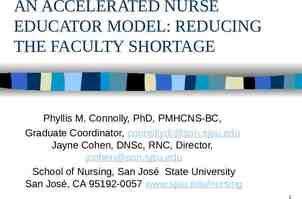Food Fortification with Folic Acid is Safe: Global Evidence Helena
28 Slides3.10 MB

Food Fortification with Folic Acid is Safe: Global Evidence Helena Pachón, PhD, MPH WHO Regional Meeting Nepal 11 July 2019

No adverse consequences Field 2018

Main messages Fortifying food with folic acid does not mask vitamin B12 deficiency Fortifying food with folic acid does not cause cancer or increase deaths from cancer Free folic acid in blood does not increase cancer or adenoma risk Fortifying food with folic acid is safe

Folic acid in fortified food Vitamin B9 (Folate) Food Folate Folic Acid Supplements Fortified Food Suitor 2000

Countries with folic acid in their standard for food fortification 73 Countries Include Folic Acid in their Fortification Standard for 1, 2 or 3 Foods FortificationData.org

Fortifying food with folic acid does not mask vitamin B12 deficiency

Folate and vitamin B12 deficiencies cause megaloblastic anemia Folate deficiency Vitamin B12 deficiency Causes Causes Megaloblastic Anemia Megaloblastic anemia is the same as macrocytic anemia IOM 2008

Folic acid masking of vitamin B12 deficiency Megaloblastic anemia due to vitamin B12 deficiency only If folic acid is provided If vitamin B12 is not provided Anemia is corrected Potentially irreversible neurological conditions persist “folic acid masking of vitamin B12 deficiency” Berry 2019

History of folic acid masking of vitamin B12 deficiency 1940s Routine clinical tests did not measure folate or vitamin B12 status Folic acid identified and synthesized before vitamin B12 Nutritional cause of megaloblastic anemia could not be determined Folic acid readily provided to treat megaloblastic anemia, regardless of its nutritional cause People with megaloblastic anemia due to vitamin B12 deficiency were treated with folic acid (and not vitamin B12) and developed neurological problems associated with vitamin B12 deficiency Berry 2019

In contemporary clinical practice, no masking of vitamin B12 deficiency Today Routine clinical tests can measure folate and vitamin B12 status People at risk for vitamin B12 deficiency (e.g. older adults) are screened The appropriate nutrient is administered depending on the cause of the anemia Office of the Primer Minister’s Chief Science Advisor & the Royal Society Te Aparangi 2018, Berry 2019

Study to assess if fortification with folic acid causes masking of vitamin B12 deficiency People with low vitamin B12 status and no anemia who consume food fortified with folic acid Folic acid is provided Vitamin B12 is not provided Anemia does not develop Vitamin B12 deficiency develops Mills 2003

Mandatory grain fortification in USA does not mask vitamin B12 deficiency Before Initiation After 1992-1995: before mandatory grain fortification with folic acid 1996-1997: mandatory grain fortification with folic acid declared; fortification voluntary 1998 : mandatory grain fortification in effect Bars: percent of people with low vitamin B12 status who did not have anemia If folic acid masks vitamin B12 deficiency: expect the bar height to increase Mills 2003

Fortifying with folic acid does not mask vitamin B12 deficiency Vitamin B12 deficiency, no anemia Vitamin B12 deficiency, no macrocytosis Fortification: USA, mandatory fortification with folic acid Population: adults 50 years Sample: nationally representative (NHANES 1991-94 & NHANES 2001-06) Macrocytosis: enlarged red blood cells If folic acid masks vitamin B12 deficiency, expect increase in prevalence between the pre and the post fortification periods Qi 2014

Vitamin B12 is added to fortified wheat flour and rice 25 Countries Include Vitamin B12 in their Fortification Standard for 1 or 2 Foods FortificationData.org

Summary “Masking of vitamin B12 deficiency” did not occur because folic acid was provided; it occurred because vitamin B12 was not provided to people with vitamin B12 deficiency With modern diagnostic tools, people at risk of vitamin B12 deficiency can be diagnosed and treated with vitamin B12 Food fortification with folic acid does not mask vitamin B12 deficiency Vitamin B12 can be added to foods through fortification

Fortifying food with folic acid does not cause cancer or increase deaths from cancer

Fortifying with folic acid does not cause cancer Cancer Rate per 100,000 Population, USA 1973: voluntary fortification of breakfast cereals with folic acid 1973: voluntary fortification of breakfast cereals with folic acid 1998: mandatory grain fortification with folic acid Male 1998: mandatory grain fortification with folic acid Female Siegel 2019

Fortifying with folic acid does not increase deaths from cancer Vollset 2013

Summary Fortification with folic acid Does not increase the number of people diagnosed with colorectal cancer Does not increase the number of people with colorectal cancer who die

Free folic acid in the blood does not increase cancer or adenoma risk Adenomas are benign tumors that can develop into cancer “Free folic acid” is also referred to as “unmetabolized folic acid”

After folic acid consumption, free folic acid appears in the blood Ireland (Vaish 2016) Brazil (Zanin Palchetti 2017) Canada (Plumptre 2015) “Free folic acid” is also referred to as “unmetabolized folic acid” USA (Pfeiffer 2015)

Free folic acid does not increase the risk of total & subtypes of colorectal cancer Association between Free Folic Acid & Cancer Risk Cancer P-valuetrend Colorectal cancer Colon cancer Proximal colon cancer Distal colon cancer Rectal cancer P-value compared multi-variable Odds Ratio across three categories of free folic acid: 0 nmol/L, 0.5 nmol/L & 0.5 nmol/L 0.32 0.75 0.39 0.11 0.63 Cho 2015

Free folic acid does not increase the risk of cancer “There were no associations observed between the presence of [free folic acid] and risk of cancer incidence.” “Free folic acid” is also referred to as “unmetabolized folic acid” Hu 2016

Free folic acid does not increase the risk of adenomas Free folic acid (nmol/L) 0 0- 3 3 - 20 20 Interval 1: Relative Risk (95% CI) Interval 2: Relative Risk (95% CI) 1.00 (reference) 1.04 (0.81-1.33) 1.00 (0.74-1.35) 0.83 (0.58-1.18) 1.00 (reference) 0.88 (0.62-1.25) 1.31 (0.95-1.82) 0.96 (0.64-1.43) Interval 1: three years Interval 2: an additional three years Adenomas are benign tumors that can develop into cancer “Free folic acid” is also referred to as “unmetabolized folic acid” Rees 2017

Summary Consumption of folic acid leads to free folic acid in the blood Free folic acid in the blood does not increase cancer or adenoma risk Adenomas are benign tumors that can develop into cancer “Free folic acid” is also referred to as “unmetabolized folic acid”

Main messages Fortifying food with folic acid does not mask vitamin B12 deficiency Fortifying food with folic acid does not cause cancer or increase deaths from cancer Free folic acid in blood does not increase cancer or adenoma risk Fortifying food with folic acid is safe

More information on the safety of folic acid https://www.cdc.gov/ncbddd/folicacid/faqs/faqs-safety.html

For more information: www.FFInetwork.org www.Facebook.com/FFInetwork https://twitter.com/FFInetwork https://www.linkedin.com/company/foodfortification-initiative/ How to cite this document: Food Fortification Initiative (FFI), Organization Title (if applicable). Title of Document. Atlanta, USA: FFI, Year. Available from www.FFInetwork.org. Accessed on [date]. SMARTER STRONGER Contact: [email protected] HEALTHIER






